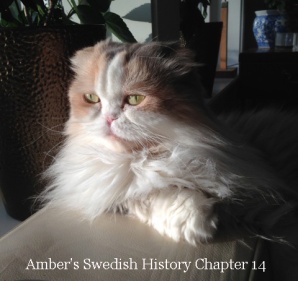(Click on photos to enlarge.)
It’s been a while since my last history
post. I’ve taken a lot of time off this summer – a Swedish tradition. So
. . . Where was I? Gustav II Adolf 1549 – 1632. Axel Oxenstern was
Adolf’s Councillor of the Realm.
Axel Oxenstern
Maria Elenora
Axel and Gustav wanted to end the war with
Denmark which had involved a lot of burning and bloodshed, the same as
wars do today. Gustav ravished Danish Skåne, burned all the churches and
killed as many peasants as he could find. The women were raped and
their children murdered. The Danes retaliated by destroying the castle
at Kronoberg, and killing the entire male population of Nya Lödöse. They
were also into town burning and sent an army to attack the castles at
Gullberg and Ӓlvsborg. Ӓlvsborg fortress fell after a hard fight and was
a serious loss for Sweden as it protected Swedish merchant ships. The
Danes now controlled Sweden’s coast all the way up to Russia, cutting
off Sweden’s access to the rest of the world.
Ӓlvsborg Fortress
Things were looking bad for Sweden, but then
England and the Netherlands got into the act. They were afraid Denmark
would screw up trade on the Baltic Sea which would make goods more
expensive for Europe. Agreements were made.
Denmark
was allowed to keep Sweden’s three crowns on its coat of arms and kept
the island of Ӧsek off the coast if Swedish Estonia. A lot or Norway
also stayed in Danish control, but the Swedes had access to the sea
again, but at great cost. They agreed to pay Denmark one million silver
riksdalers for all the towns they burned – about 25,000 kilos of silver.
Riksdaler
They were given six years to pay it and in
the mean time the Danes kept control of Nya, Gamla Lödöse, and what was
left of Göteborg. It was a hard time for Sweden. The Rikstag imposed a progressive tax on the people. Gustav kicked in
20% of the money the State paid him. Bishops paid fifty riksdalers,
craftsmen four, common labor one and maids one half. But there was a
problem collecting these taxes as there were not many silver coins.
People were used to paying in chickens, and pigs and such, but Sweden
got lucky. The copper mine at Falun started to pay off. Three thousand
tons a year were sent to Holland where it was used for rooftops. The
copper was paid for with Dutch rijkdaalers and the rijkdaalers were then
sent to Denmark. Falun became the second biggest town in Sweden for a
while. The copper mine is still there, about twenty miles from where I
live.
Inside Faluln's Copper Mine
It’s cold and damp, but looks like a good place to bury your poop. Nobody works there anymore.
Where was I? Oh yes, Gustav. He was able to rebuild Göteborg, but it
was designed and run mostly by Dutch people who built canals all over
the place. They were used as sewers and for transportation.
Next Chapter: Working it out with Russia, and the Bible.







No comments:
Post a Comment